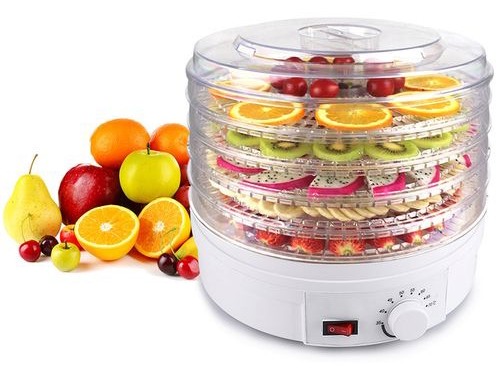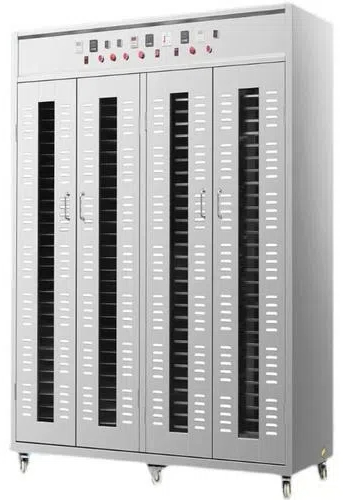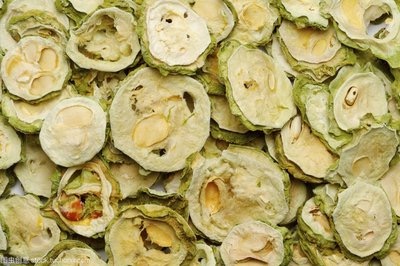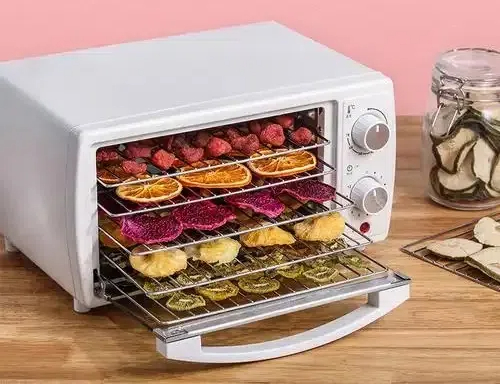
Content Menu
● Understanding Food Drying
● What is a Heat Pump Dryer?
● What is a Vented Dryer?
● Comparison of Heat Pump Dryers and Vented Dryers
● Advantages of Heat Pump Dryers
● Disadvantages of Heat Pump Dryers
● Advantages of Vented Dryers
● Disadvantages of Vented Dryers
● Choosing Between Heat Pump and Vented Dryers
● Real-World Applications
● Conclusion
● FAQ
>> 1. What types of foods can be dried using heat pump dryers?
>> 2. Are heat pump dryers more energy-efficient than vented dryers?
>> 3. How do I maintain my heat pump dryer?
>> 4. Can I use a vented dryer indoors?
>> 5. What is the average lifespan of a heat pump dryer?
In the world of food processing and preservation, drying is a crucial step that significantly affects the quality and longevity of food products. With the advancement of technology, various drying methods have emerged, including heat pump dryers and vented dryers. This article will explore the differences, advantages, and disadvantages of heat pump dryers compared to vented dryers, particularly in the context of food drying.

Understanding Food Drying
Food drying is a method used to remove moisture from food products to inhibit the growth of bacteria, yeasts, and molds. By reducing the water content, dried foods can be stored for longer periods without refrigeration. The drying process can be accomplished through various methods, including:
- Sun Drying: Utilizing sunlight to dry food naturally.
- Air Drying: Using ambient air to evaporate moisture.
- Oven Drying: Employing an oven to heat food and remove moisture.
- Dehydrators: Specialized appliances designed for efficient moisture removal.
- Heat Pump Dryers: Advanced machines that use heat pump technology for energy-efficient drying.
- Vented Dryers: Traditional dryers that expel hot air outside.
What is a Heat Pump Dryer?
A heat pump dryer is an innovative appliance that utilizes a refrigeration cycle to dry food products. It operates by extracting moisture from the air inside the drying chamber and recycling that air. The process involves:
1. Evaporation: Moist air is drawn into the dryer and passed over a cold evaporator coil, where moisture condenses into water.
2. Heating: The remaining dry air is then heated using a compressor and sent back into the drying chamber.
3. Recirculation: This cycle continues until the desired moisture level is achieved in the food product.
Heat pump dryers are known for their energy efficiency and ability to maintain lower drying temperatures, which helps preserve the nutritional quality of the food.
What is a Vented Dryer?
A vented dryer operates by drawing in ambient air, heating it, and then blowing it into a drum where the food is placed. The hot air absorbs moisture from the food and is then expelled outside through a vent. Key characteristics include:
- Higher Temperatures: Vented dryers typically operate at higher temperatures compared to heat pump dryers.
- Direct Venting: Moist air is expelled outside, which can lead to energy loss as fresh air needs to be heated continuously.
- Simplicity: Vented dryers are generally simpler in design and may require less maintenance than heat pump dryers.
Comparison of Heat Pump Dryers and Vented Dryers
| Feature | Heat Pump Dryer | Vented Dryer |
| Energy Efficiency | Highly efficient | Less efficient |
| Temperature Control | Lower temperatures | Higher temperatures |
| Moisture Management | Recirculates air | Expels moist air outside |
| Nutritional Preservation | Better preservation of nutrients | May degrade some nutrients |
| Initial Cost | Higher initial investment | Lower initial investment |
| Operating Cost | Lower operating costs | Higher operating costs |
| Maintenance | Requires more maintenance | Easier maintenance |
| Environmental Impact | Lower carbon footprint | Higher carbon footprint |
Advantages of Heat Pump Dryers
1. Energy Efficiency: Heat pump dryers use significantly less energy than vented dryers due to their recirculation system.
2. Nutritional Quality: By operating at lower temperatures, heat pump dryers help retain more vitamins and minerals in dried foods.
3. Versatility: These dryers can handle a wide variety of food products, including fruits, vegetables, meats, and herbs.
4. Environmentally Friendly: Reduced energy consumption leads to a smaller carbon footprint.
5. Consistent Results: Heat pump dryers provide uniform drying results due to their controlled environment.
6. Reduced Risk of Over-Drying: The controlled environment minimizes the risk of over-drying or scorching delicate foods like herbs or berries.
7. Less Noise Pollution: Many heat pump dryers operate more quietly than traditional vented models, making them suitable for environments where noise levels must be kept low.

Disadvantages of Heat Pump Dryers
1. Higher Initial Cost: The upfront investment for heat pump dryers can be significant compared to vented models.
2. Longer Drying Times: While energy-efficient, heat pump dryers may take longer to complete the drying process due to their lower operating temperatures.
3. Complexity: The technology involved can lead to more complex maintenance requirements.
4. Limited Availability: In some regions, finding parts or service for heat pump dryers may be more challenging compared to vented models.
5. Sensitivity to Environment: Performance may vary based on ambient humidity levels; extremely high humidity can affect efficiency.
Advantages of Vented Dryers
1. Lower Initial Cost: Vented dryers are generally less expensive to purchase.
2. Faster Drying Times: They typically dry food faster due to higher temperatures and direct airflow.
3. Simpler Design: The straightforward design makes them easier to operate and maintain.
4. Widely Available Parts: Replacement parts are often easier to find due to their prevalence in homes and businesses.
5. Less Sensitivity to Humidity Levels: Vented dryers perform consistently regardless of external humidity conditions since they expel moist air outside.
Disadvantages of Vented Dryers
1. Energy Inefficiency: They consume more energy over time due to constant heating of new air.
2. Nutrient Loss: High temperatures can lead to degradation of sensitive nutrients in food products.
3. Environmental Impact: Higher energy consumption contributes to a larger carbon footprint.
4. Moisture Issues Indoors: If used indoors without proper ventilation, they can increase humidity levels in the surrounding area.
5. Potential for Over-Drying: The lack of temperature control can lead to over-drying or burning delicate foods if not monitored closely.
Choosing Between Heat Pump and Vented Dryers
When deciding between heat pump dryers and vented dryers for food processing, consider the following factors:
- Budget: If you have a limited budget, vented dryers might be more appealing due to their lower initial cost.
- Product Type: For delicate items like herbs or fruits that require careful handling, heat pump dryers are preferable due to their lower temperatures.
- Energy Considerations: If long-term energy savings are a priority, investing in a heat pump dryer could be beneficial despite its higher upfront cost.
- Space Availability: Ensure you have adequate space for installation; vented dryers require external venting which may not be feasible in all locations.
- Production Volume Needs: For large-scale operations requiring high throughput, consider how each type aligns with your production goals regarding speed and efficiency.
Real-World Applications
Heat pump and vented dryers are utilized across various sectors within the food industry:
- Commercial Kitchens: Restaurants often use dehydrators or heat pump systems for herbs and spices.
- Snack Food Manufacturers: Companies producing dried fruit snacks benefit from both types depending on product specifications.
- Meat Processing Plants: Jerky manufacturers utilize both systems but often prefer heat pumps for their ability to maintain flavor integrity while reducing fat content during drying.
- Home Users: Home cooks may choose either system based on personal preferences for convenience versus energy efficiency.
Conclusion
In conclusion, both heat pump dryers and vented dryers have their unique advantages and disadvantages when it comes to food drying applications. Heat pump dryers excel in energy efficiency and nutrient preservation but come with higher initial costs and longer drying times. Conversely, vented dryers offer faster results at a lower purchase price but may lead to greater nutrient loss and higher operating costs over time.
Ultimately, the choice between these two types of dryers will depend on specific needs such as budget constraints, types of food being dried, energy considerations, space availability for installation, and production volume requirements. By understanding these factors, businesses can make informed decisions that align with their operational goals while ensuring high-quality dried products.

FAQ
1. What types of foods can be dried using heat pump dryers?
Heat pump dryers are versatile and can effectively dry various foods such as fruits (apples, bananas), vegetables (carrots, tomatoes), meats (jerky), herbs (basil), and even flowers for preservation purposes.
2. Are heat pump dryers more energy-efficient than vented dryers?
Yes, heat pump dryers are significantly more energy-efficient as they recycle air within the system rather than continuously heating new air from outside like vented dryers do.
3. How do I maintain my heat pump dryer?
Regular maintenance includes cleaning filters, checking seals for leaks, ensuring proper airflow around the unit, and scheduling professional servicing as needed for optimal performance.
4. Can I use a vented dryer indoors?
While it is possible to use a vented dryer indoors with proper ventilation systems in place, it is generally recommended to use them outdoors or in well-ventilated areas due to moisture expulsion concerns.
5. What is the average lifespan of a heat pump dryer?
The average lifespan of a heat pump dryer can range from 10 to 15 years with proper care and maintenance compared to about 8 to 12 years for traditional vented models.












